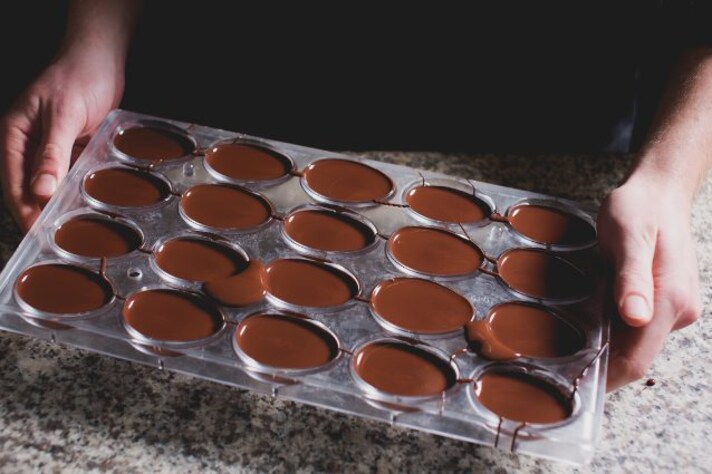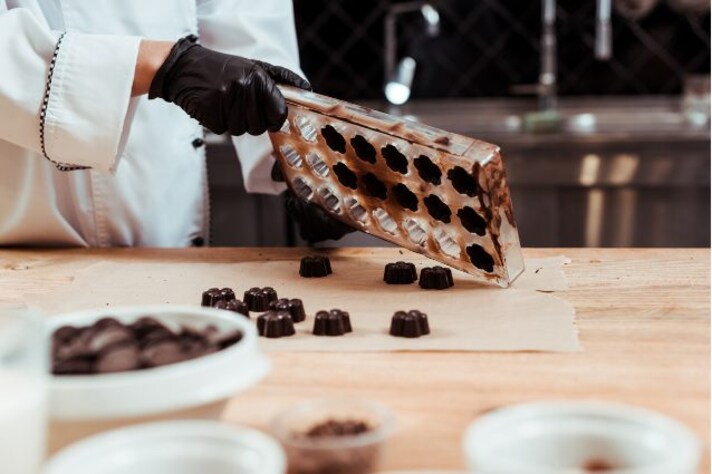Here’s Why You Should Never Use Wet Molds for Homemade Chocolate
Wet molds ruin homemade chocolate by introducing moisture, causing the chocolate to seize, develop uneven textures, or form a dull white “bloom.” Moisture also prevents the chocolate from releasing cleanly and can create hygiene issues. For best results, always use clean, dry polycarbonate or silicone molds to achieve a smooth, glossy finish and proper set.

If you’re diving into the world of homemade chocolate, you’re probably excited about crafting bars, truffles, or other delicate confections. But before you melt that first batch of chocolate, there’s one rule you absolutely need to know: wet molds and chocolate are not friends. In fact, moisture is the sworn enemy of chocolate, and using wet molds can quickly turn your chocolaty dreams into a sticky disaster. Here’s why.
Moisture Is The Chocolate Killer
Chocolate may seem tough, but when it comes to moisture, it’s as fragile as a soufflé. Even a tiny amount of water can cause what’s called “seizing”—a process where the smooth, shiny liquid chocolate suddenly becomes a gritty, clumpy mess. When chocolate seizes, it’s nearly impossible to get it back to its silky, pourable state. Wet molds introduce that dreaded moisture, compromising the tempering process and ruining the texture. You might think it’s just a drop, but when it comes to chocolate, every drop counts—and not in a good way.
Uneven Texture and Blooming Problems
If moisture doesn’t outright seize your chocolate, it can still wreak havoc by causing uneven textures and something called “bloom.” Bloom happens when fat or sugar crystals migrate to the surface of the chocolate, creating a dull, whitish film. While it’s not harmful, it’s far from the glossy, appealing finish you’re aiming for. Wet molds make this phenomenon more likely because moisture disrupts the tempering process that ensures a smooth, consistent texture. You could end up with streaky, patchy chocolate that looks more like a science experiment gone wrong than the shiny, luscious bar you had in mind.

The Mold Release Nightmare
One of the biggest challenges of using wet molds is the dreaded release problem. Properly tempered chocolate should easily pop out of a mold, retaining its shape with that signature snap. But when molds are wet, chocolate tends to stick, leaving you with broken bits instead of clean, perfectly molded pieces. The moisture creates a barrier between the chocolate and the mold, preventing it from releasing smoothly. So instead of a beautifully formed bar or truffle, you’re left with a sad, sticky mess that refuses to budge.
Why Dry Molds Matter
Beyond texture and appearance, there’s also a hygiene aspect to consider. Moisture in molds can attract bacteria and create the perfect environment for mold (the bad kind). Chocolate, which has low water content, usually has a long shelf life, but when you introduce water into the equation, it compromises that stability. Using wet molds increases the risk of your chocolate developing spoilage issues faster than you can say “melted mess.” Keeping molds dry is crucial not only for the aesthetics of your creation but for ensuring its safety and longevity.

So, What’s the Right Mold for Chocolate?
When it comes to molding chocolate, you need a dry, clean mold, preferably made of polycarbonate or silicone. Polycarbonate molds are the gold standard for professional chocolatiers, offering a shiny finish and a sturdy structure that helps chocolate set properly and pop out cleanly. Silicone molds are another good option for home use; they’re flexible and make it easier to release the chocolate. Whatever you choose, just remember to thoroughly dry them before use—chocolate is a diva that refuses to perform if its stage isn’t perfectly set.
;Resize,width=767;)

;Resize,width=712;)

